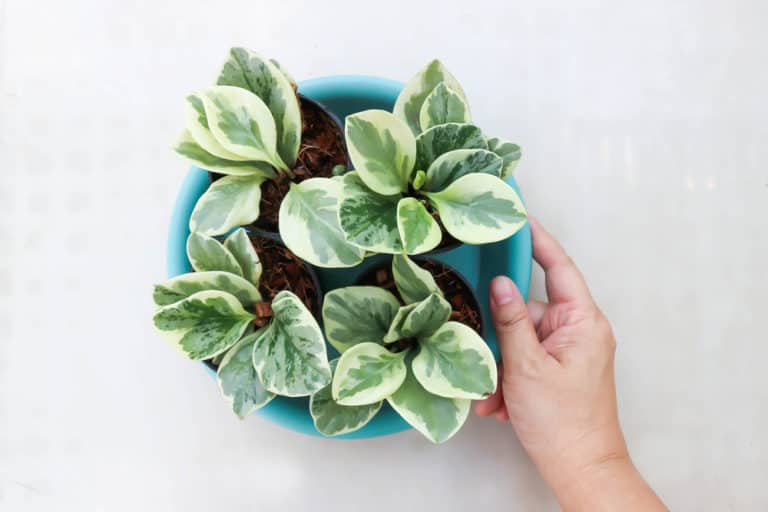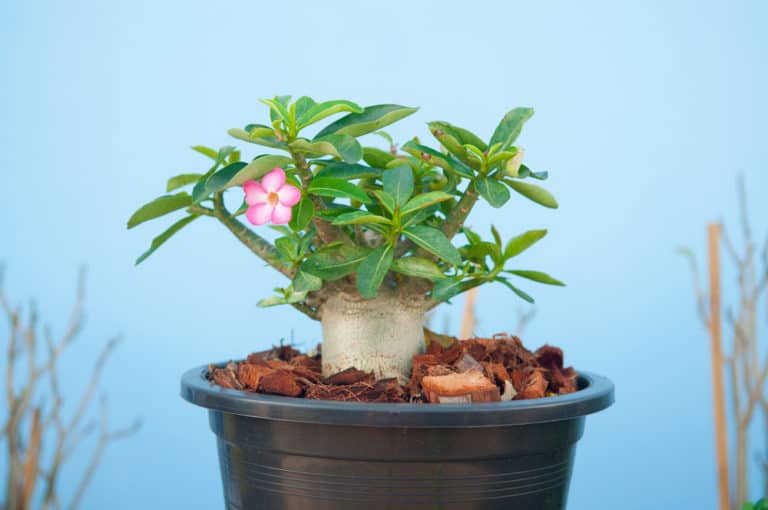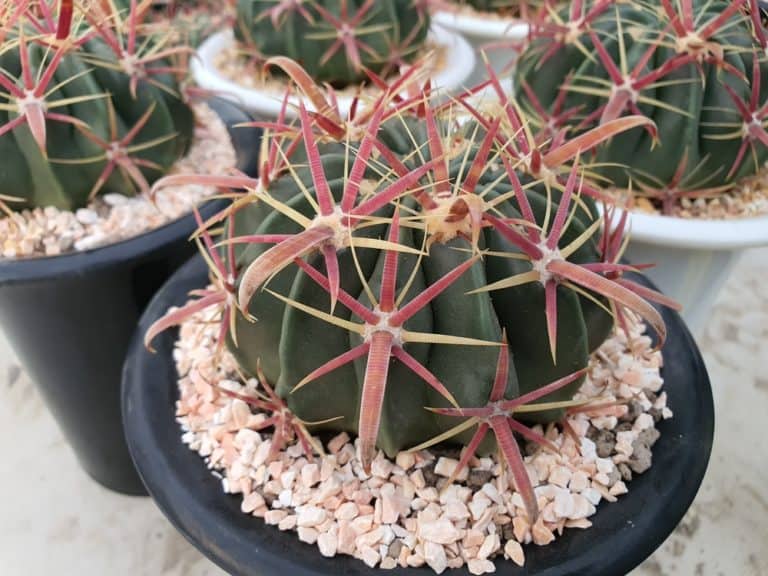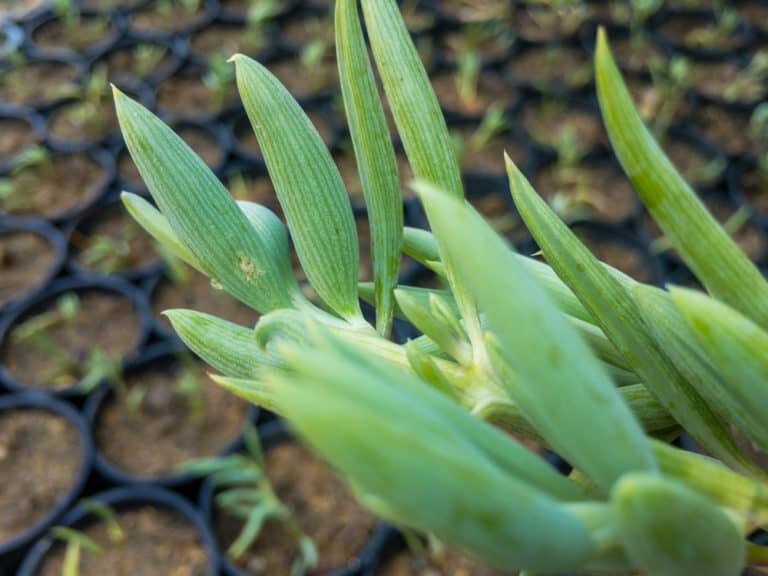Philodendron Gigas Houseplant Care Guide (2024)
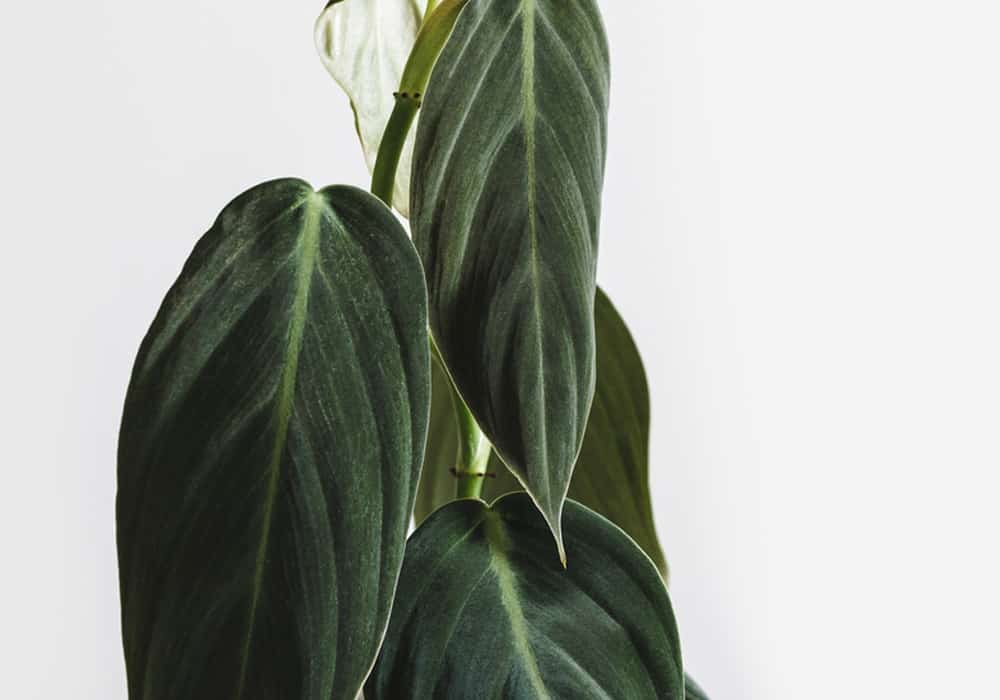
It’s exciting to know that beautiful new plants are still being discovered in the tropics, centuries after the first explorers arrived.
The Philodendron gigas is one such example. First described in 1997, the gigas plant is a rare and expensive houseplant but is much sought-after because of its huge, velvety leaves.
| Scientific Name | Philodendron gigas |
| Common Name | Philodendron gigas |
| Light | Bright indirect sunlight |
| Watering | Water if the top 2 inches of soil are dry |
| Temperature | 65 to 80ºF (20 to 27ºC) |
| Hardiness Zone | 9b to 11 |
| Humidity | 60 to 80% |
| Soil Type | Rich, quick-draining, loamy |
| Soil pH | 5.6 to 7.5 (acidic to neutral) |
| Fertilizing | Once or twice a month in spring and summer |
| Repotting | Once a year |
| Pruning | Beginning of the growing season |
| Propagation | Root in water or soil |
| Toxicity | Toxic to humans and pets |
| Mature Size | 8 to 10 feet as a houseplant |
| Bloom Time | Rarely flowers indoors |
What’s Unique About Philodendron Gigas?
The Philodendron gigas plant is native to the rainforests of Panama, where it was discovered in 1997. There, it climbs high up into the trees of the canopy.
It’s still a rare and expensive cultivar, but houseplant aficionados love Philodendron gigas plants for their huge, velvety, deep green leaves and extensive vining habit.
Despite its luxurious appearance, growing Philodendron gigas is not difficult, even for a beginner in the world of potted plants.
As well, Philodendron gigas plants share a common characteristic with other members of the philodendron family. They can remove a significant amount of formaldehyde from the air.
Philodendron Gigas Care
The Panamanian rainforests where Philodendron gigas originates are hot and humid, with dappled shade from the trees overhead.
Your Philodendron gigas plant care should aim to provide similar conditions in your home, without turning it into a tropical jungle.
The essentials of gigas plant care are warm, humid surroundings in a bright location with regular watering.
Light
While the tree canopy shields the Philodendron gigas from the direct sun in the Panamanian rainforests, a fair amount of the sunlight still gets through.
Thus, Philodendron gigas light requirements are for bright indirect light, or between 10,000 and 20,000 lux.
Any bright location out of the full sun will satisfy your gigas plant light needs.
A north-facing window might not be bright enough, while if you set your Philodendron gigas right next to an east-facing window that’s just about perfect.
If all you have is a south or west exposure, find a spot in the room out of the direct sun. The intense rays will damage those gorgeous leaves!
Watering
While it can get quite dry in the winter in Panama, with only a couple or so days a month of rain, the spring, summer, and fall sees rainfall every other day at least.
Your Philodendron gigas watering should follow that seasonal cycle.
During its growing season, water gigas plant whenever the top 2 inches of the soil are dry.
In winter, however, its watering needs change drastically. You can let the soil dry out almost completely and then give the pot a thorough soaking.
Just ensure that you never leave water sitting in the saucer, as Philodendron gigas will not tolerate wet soil.
Temperature
The average daytime temperatures in Panama are hot year-round, rarely falling below 86ºF (30ºC). Nighttime lows never get below 70ºF (21ºC).
The acceptable Philodendron gigas temperature range is from 65 to 80ºF (20 to 27ºC). A good rule of thumb is that if your indoor temperature is okay for you, it’s fine for your Philodendron gigas.
The higher the temperature for gigas plant, the more luxuriant its growth, so consider moving it outdoors in hot summer weather.
Be careful, however, because Philodendron gigas has little temperature tolerance under 60ºF (15ºC), and no frost hardiness at all.
Even when grown indoors, keep this tropical plant out of drafts and away from cold windows.
Humidity
Panama is a humid place; while in late winter and early spring the humidity level is around 70%, it’s between 80 to 90% from May to December.
The ideal humidity for gigas plant is between 60 to 80%, which is much higher than you want for your whole home.
While some growers recommend misting to meet Philodendron gigas humidity requirements, that’s a risky approach. Water on those velvety leaves can lead to fungal and bacterial diseases.
It’s better to use a pebble tray filled with water under the pot, but best of all is a humidifier to keep all of your tropical plants happy.
Soil
In the rainforests, Philodendron gigas vines can set their roots in the spongy soil of the forest floor, or on a tree branch in the canopy.
The roots need moisture and nutrients, but they also need to be able to breathe, so Philodendron gigas soil should be loose and with lots of humus.
The range for pH level for gigas plant is 5.6 to 7.5, or acidic to neutral.
You don’t have to get complicated with the soil for gigas plant; something as simple as 100% peat moss will work just fine.
You can also buy a commercial aroid soil mix.
Fertilizer
You will definitely want to use some Philodendron gigas fertilizer to support the growth of those big, beautiful leaves.
You can use a liquid fertilizer for gigas plant with a fertilizer ratio of 3:1:2. The extra nitrogen will help grow the best and biggest leaves.
However, a balanced fertilizer will work well, too.
Dilute the solution to half the recommended strength, and apply to the soil surface once or twice a month throughout the growing season. Right after you’ve watered is the best time.
You should not use any fertilizer in the fall and winter months when your Philodendron gigas is in its dormant phase.
Potting & Repotting
Philodendron gigas repotting should be done every 2 or 3 years in early spring.
Philodendron gigas doesn’t mind being a bit rootbound.
However, it’s time for repotting gigas plant when the roots are growing out of the drainage holes, or the roots are coiled around in the pot.
Don’t think that you’re doing your Philodendron gigas a favor by moving it up to a much bigger pot size; only go up by a couple of inches in diameter.
You can use a terra cotta or plastic pot. Just make sure that it has good drainage.
Finally, always replace the potting soil to give your Philodendron gigas a fresh start in its new pot.
Pruning
Philodendron gigas pruning can be done to remove dead or damaged leaves, or to shape this rambling vine to your liking.
Major pruning should be done in early spring at the beginning of its growing period.
Cut back any stems that you want to get rid of right back to the soil line. This will encourage new, dense growth.
Never cut out more than a third of your Philodendron gigas in any one season.
When you trim leaves, cut out their stalks as well.
When cutting gigas plant, always use sterilized scissors and wear gloves to protect yourself from the toxic sap.
Propagation
Philodendron gigas propagation is easily done by rooting stem cuttings, or by layering.
To propagate gigas plant with stem cuttings, take a young piece of stem about 5 or 6 inches long, with a few leaves and at least 1 node.
Cut just below the node and remove all but the top leaves.
Put the cutting in water or damp soil, and keep it warm and humid until roots form and you can plant them out.
Alternatively, you can pin down a stem to the soil, making sure a node is in contact with the soil.
New roots will sprout from the node, and once they’ve developed a leaf stalk, cut it from the mother plant and pot it up separately.
Also, make sure to check out our in-depth Philodendron gloriosum care guide.
Common Problems of Philodendron Gigas
You might think that such a luxurious-looking plant would be difficult to care for, but there are remarkably few Philodendron gigas problems.
As well, most of those potential problems with gigas plant can be avoided simply by keeping your Philodendron gigas in the conditions that it prefers.
However, if the leaves start to look less than spectacular, you can usually rescue this beautiful plant.
Pests
While there are not a lot of Philodendron gigas pests, it’s best to take precautions to prevent them from getting established.
It’s advised that you use a damp cloth to wipe down the leaves of your gigas plant every 10 days or so to keep them from getting dusty. If you add a few drops of neem oil to the water, you should deter any bugs from settling in.
You might see some aphids on stems and undersides of leaves. They’re small, greenish flying insects. You can spray them off in the shower or vacuum them up with a hand vac.
Scale insects may look like little brown bumps on the stems or under the leaves, but they’re actually bugs sucking the sap out of your Philodendron gigas. Scrape them off gently.
Diseases
If you are careful to keep your Philodendron gigas watered just enough, and don’t let the leaves get wet, you may never have to worry about Philodendron gigas diseases.
However, under less than ideal conditions your gigas plant may fall victim to a bacterial or fungal disease.
Root rot can develop if your Philodendron gigas roots sit in sopping wet soil. If it happens, you will see drooping, yellowing leaves and softening stems, as well as roots turning black and smelly.
Cut out all the infected tissues and replant your Philodendron gigas in fresh soil in a new pot.
Leaf spot can be a bacterial or fungal disease causing various types of unsightly spots and eventually killing leaves. Cut off all diseased leaves and stalks and improve air circulation around your Philodendron gigas.
Growing Problems
A lot of times, your sick plant may just be experiencing a growing problem caused by your failure to give it the conditions it needs to thrive.
Luckily, all it takes is an improvement in those conditions for it to be happy again.
Soft yellow leaves are a sign that you’ve been overwatering your Philodendron gigas. If the soil is really soaking wet, it’s best to repot it in fresh, loose soil.
On the other hand, yellowing, crispy leaves mean that it’s getting too much sun.
Brown leaves can mean that you are underwatering.
Small leaves spaced far apart indicate that your Philodendron gigas is not getting enough light.
Toxicity of Philodendron Gigas
Like all philodendrons, the gigas plant is toxic to humans and animals.
Its toxicity is caused by the calcium oxalate crystals in all parts of the plant. The tiny raphides will pierce delicate tissues and cause a lot of pain.
It’s rarely fatal, but can cause considerable distress if ingested by children or pets.
For Humans
Philodendron gigas is toxic to humans, but the effects of exposure to it are usually not too serious.
Adults are most likely to develop a rash if exposed to the sap. If it gets on your skin, rinse it off.
Children, on the other hand, might be tempted to try eating a leaf. They’re unlikely to eat very much, because the pain from the raphides will commence almost immediately.
Get them to rinse and spit anything out of their mouth, and give them something cool and soothing to deal with the pain.
However, if they have a swollen tongue or their airways have closed up, take them to the emergency room at once.
For Pets
If you have pets, you should be aware of the symptoms of calcium oxalate poisoning.
Cats, dogs, and rabbits are equally susceptible to the toxins in your Philodendron gigas.
If your pet starts wheezing or drooling excessively, or has vomiting or diarrhea, do not attempt to treat the symptoms at home. Take your pet to the veterinarian as soon as possible.
If you want to keep both pets and a Philodendron gigas in your home, you should make an effort to keep the plant out of reach.
Because it is a naturally climbing plant, you can train it up a pole and protect it at floor level from your pets.
Philodendron Gigas Appearance
In Greek, “gigas” means giant, and that name is definitely a perfect description of the Philodendron gigas appearance.
From its massive leaves to its long vines, this tropical climber is definitely one of the giants of the rainforest.
The huge, velvety leaves are produced in abundance on the fast-growing vines.
Foliage
The foliage of Philodendron gigas is absolutely stunning and will naturally take a dominant role in your indoor garden.
When a new leaf unfurls, it is a coppery shade with white veins. As the leaves mature, they become first olive green and then a deep, rich green with pale green veins.
The underside is a paler green, sometimes with a reddish tinge.
They have a velvety texture on top, and a slightly glossy underside.
Indoors, leaves can grow to a foot long in an ovate shape, while a mature vine grown outdoors in a tropical climate can support leaves as long as 4 feet.
Flowering
The chances of seeing a Philodendron gigas flower indoors are pretty slim, as blooming only usually happens on a mature vine grown outdoors.
When it does occur, Philodendron gigas flowering takes place in spring and they can last until fall, when they ripen into green and white berries.
The tiny white flowers are arranged on the long, thin spadix, which is wrapped in a red and purple spathe.
If you want to try to get your indoor Philodendron gigas to flower, in winter give it 8 or 9 hours of daylight, and then complete darkness overnight with a temperature around 60ºF (15ºC).
Size and Growth
The size of Philodendron gigas depends very much on where it’s being grown.
While an indoors potted plant will max out at about 10 feet, in Philodendron gigas’ native rainforests these vigorous vines are known to hit 65 feet in length before they’re done!
Philodendron gigas has a very rapid growth rate, and can double or even triple its size in a single season.
It is a natural climber, hugging close to tree trunks in the rainforests of Panama.
In your home, it will grow faster and bigger when staked with a sphagnum moss pole to support its climbing habit.
Philodendron Gigas Fragrance
There is no Philodendron gigas fragrance. The evergreen foliage has no scent, and the rare flowers are also fragrance-free.
Because of this, it can safely be used in public installations where scented plants may pose a serious risk to individuals who are sensitive to fragrances.
You may even prefer that in your own home.
This isn’t to say that the Philodendron gigas does not benefit your indoor environment in other very important ways.
Formaldehyde is a dangerous chemical that is used in everything from plywood to carpeting, and philodendron plants have been proven to filter it out of the air.
Suggested Uses for Philodendron Gigas
Whether you use it indoors or outside, Philodendron gigas is bound to become a key part of your plant collection.
Because of its vining nature, it can be trained up a pole in a corner of a room, or allowed to ramble across a trellis to create a living screen.
You can suspend it from the ceiling in a hanging planter to bring a luxurious touch to your bedroom as it purifies your air as your sleep.
Outdoors in a tropical climate, it can be planted at the base of a tall tree and allowed to climb for dozens of feet into the branches.
FAQ
What is Philodendron gigas?
Philodendron gigas is a tropical climbing vine discovered in Panama in 1997, where it grows in the rainforests. It is a rare and sought-after houseplant.
How to identify Philodendron gigas?
Philodendron gigas has ovate copper and green leaves with a velvety texture, and they grow to 1 foot long indoors and 4 feet when grown in a tropical climate.
How to care for Philodendron gigas?
Philodendron gigas should be grown in a location with bright, indirect light in a warm and humid environment, in moderately moist soil with regular fertilization.
How to grow Philodendron gigas indoors?
Philodendron gigas can be grown indoors as a potted plant in conditions similar to its native habitat; it should be kept out of the full sun with warm temperatures and high humidity.
How to grow Philodendron gigas outdoors?
Philodendron gigas can be grown outdoors in a tropical climate, where it will naturally climb tree trunks and branches. In temperate zones it can be taken outdoors in summer.
How fast does Philodendron gigas grow?
Philodendron gigas has a very rapid growth rate, and the vines can double or even triple in length in a single year under excellent conditions.
How tall does Philodendron gigas grow?
Philodendron gigas vines will grow from 8 to 10 feet when grown indoors, while plants grown outdoors in tropical zones can reach 65 feet in length.
How to make Philodendron gigas grow faster?
Philodendron gigas vines will be able to grow their fastest when grown in high temperatures and humidity, in bright light while being protected from the full sun.
How to stake Philodendron gigas?
Philodendron gigas vines grown in pots will naturally climb when provided with a sphagnum moss pole for support, while outdoors plants will climb tree trunks.
How to pot Philodendron gigas?
Philodendron gigas should be planted in a loose, well-draining soil rich in organic matter such as peat moss, in a pot with good drainage holes.
How to revive Philodendron gigas?
If your Philodendron gigas soil has dried out completely, you can revive it by soaking the entire pot in a pail of tepid water until it is saturated.
Why is my Philodendron gigas dying?
Your Philodendron gigas may have developed a bacterial or fungal disease from too much water. Cut out all diseased parts and replant it in fresh soil.
Why is my Philodendron gigas drooping?
Your Philodendron gigas may be sitting in wet soil which does not allow the roots to breathe. Try poking holes in the soil to let excess water drain.
How cold can Philodendron gigas tolerate?
Philodendron gigas prefers temperatures from 65 to 80ºF (20 to 27ºC), will start to suffer below 60ºF (15ºC), and will be killed by freezing temperatures.
How to get rid of pests on Philodendron gigas?
Most Philodendron gigas pests can be deterred by wiping down both sides of the leaves with an insecticidal soap or neem oil solution every few weeks.
Is Philodendron gigas toxic to cats?
Yes, Philodendron gigas is toxic to cats. If your cat ingests some foliage and starts wheezing, or has vomiting or diarrhea, take it to the veterinarian immediately.
Is Philodendron gigas toxic to dogs?
Yes, Philodendron gigas is toxic to dogs. If your dog starts drooling excessively or wheezing, or has vomiting and diarrhea, take it in for emergency care.
Is Philodendron gigas toxic to children?
Yes, Philodendron gigas is toxic to children. If your child has a swollen tongue or constricted airways, you should take them to the emergency room at once.
Is Philodendron gigas toxic to humans?
Yes, Philodendron gigas is toxic to humans. If the sap gets on your skin, rinse it off as soon as possible to prevent a painful rash.
Does Philodendron gigas have a scent?
Philodendron gigas does not have a scent, so it’s an appropriate plant to use in public or private settings where people with fragrance sensitivities may encounter it.

